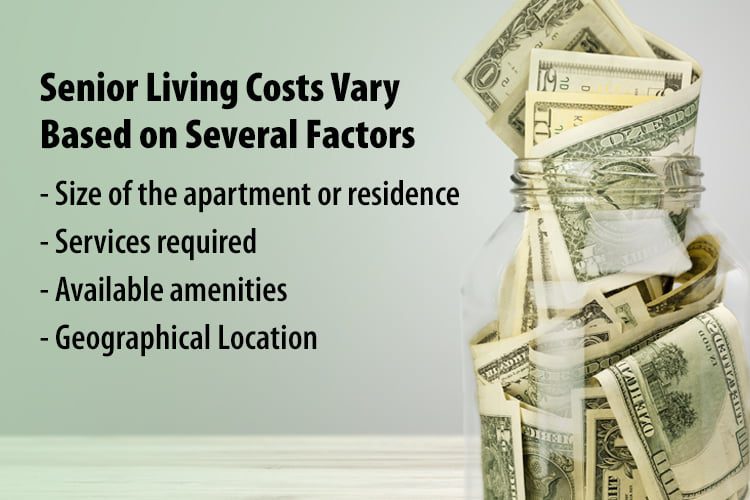When a loved one needs more daily support, the biggest question many families face is: how do we pay for it? Assisted living and memory support provide safety, dignity, and a community of care — but the price can feel overwhelming at first. The good news is that most families don’t rely on a single source. They build a plan from several options, which makes quality care possible without carrying the whole cost alone. Below are some of the most practical ways to pay for assisted living.
What goes into the cost of assisted living (and what you actually get)
Senior living communities today aren’t hospital environments. They are thoughtfully designed neighborhoods where older adults enjoy privacy, support, and community. Costs vary by level of care, apartment type, and services, but monthly fees typically include:
- Housing and utilities: a private or semi-private apartment, maintenance, and utilities like electricity, Wi-Fi, and water.
- Daily assistance: support with activities of daily living such as bathing, dressing, mobility, or medication management.
- Meals and lifestyle services: three meals a day, laundry, housekeeping, transportation, and access to enrichment programs.
- Specialized support: memory care services for residents with Alzheimer’s or other forms of dementia, designed to provide security and tailored engagement.
At Cappella of Grand Junction, monthly rates include chef-planned meals, light-filled common spaces, a wellness center, pet therapy, and secure courtyards. For those who need memory support, structured programming and specially trained team members focus on safety, comfort, and purpose.
For context, national trackers show the estimated 2025 median monthly assisted living cost around $5,676, with many communities falling between $4,000 and $8,500 depending on services, apartment size, amenities, and location.

Local costs in Grand Junction often come in lower than the Colorado state average, but the final figure depends on care needs and the type of community chosen.
Ways to pay for assisted living
Programs and benefits that can help reduce monthly expenses

Most families combine several resources rather than relying on one. While Medicare does not pay for long-term room and board in assisted living, it may cover limited, short-term needs after a qualifying hospital stay, such as skilled nursing, rehabilitation, or certain home health services when eligibility criteria are met. Other assistance programs that may help include:
- Veterans Aid and Attendance: Eligible veterans and surviving spouses may receive an additional monthly amount that can be used toward assisted living or memory care. Applications require medical and financial documentation, and accredited Veterans Service Officers can help at no cost. Learn more from the VA.
- Social Security and pensions: These steady income sources often form the backbone of a care plan. Families then layer savings, insurance benefits, or home equity to cover the remainder.
- Life insurance: Some policies allow early access to benefits (accelerated death benefits) or offer conversion options that can be used for housing and care expenses. Review your policy with your insurer or advisor to confirm eligibility, fees, and tax implications.
These benefits rarely cover everything on their own, but they can close key gaps and reduce monthly stress.
Private pay: insurance, savings, and home equity

Most families combine several private resources. The right mix depends on timing, taxes, and how quickly needs may change.
- Long-term care insurance (LTCI): If your loved one has a policy, it may cover assisted living or memory care, depending on the terms. Make note of elimination periods and daily or monthly maximums and begin the claim early since approvals can take time.
- Savings and retirement funds: IRAs, 401(k)s, and annuities can provide flexible funding. A financial professional can help coordinate withdrawals for taxes and keep a cushion for unexpected needs. According to a recent Cost of Care Survey, year-over-year cost increases across care types, so building a modest buffer into the plan helps avoid surprises.
- Home equity: For many older adults, their home is their biggest asset. Families commonly use sale proceeds or a short-term bridge loan while a home is on the market. In some cases, a reverse mortgage can help. The Consumer Financial Protection Bureau has guidance on how reverse mortgages work and what to consider.
- Family pooling: Sometimes multiple family members contribute together. Clear agreements make this approach easier and less stressful.
How to compare and plan with confidence
It’s much easier to find a workable path when you break things into steps:
- List care needs today and what may change soon. Note daily routines that require help and whether memory or mobility changes might increase support needs.
- Gather local quotes. Tour at least two or three communities. Ask for itemized estimates and be sure you understand what’s included in the base fee.
- Match resources to costs. Layer Social Security and pensions with insurance, savings, and home equity to reach the monthly figure with a small buffer.
- Compare to home care honestly. Many families underestimate the hidden costs of aging in place. Assisted living bundles meals, activities, transportation, and maintenance. Home care bills by the hour and doesn’t include housing or food.
- Ask detailed questions on tours. What’s included in the monthly rate? What triggers a change in care level? How often are rates reviewed? How is memory support staffed and programmed?
- Review annually. Care needs and expenses evolve. Revisiting your plan helps you stay ahead of changes.
Making the decision easier
Feeling anxious about the financial side is normal. Once families see the many ways to pay for assisted living — veterans’ benefits, pensions, insurance, savings, and home equity — the path forward can become clearer.
At Cappella of Grand Junction, we believe paying for assisted living shouldn’t be an obstacle to finding the right care. We’re here to explain costs, walk through options, and help families build a plan that balances quality of life with financial reality. Call us today at 970-822-7070 or reach out online to schedule a tour.




